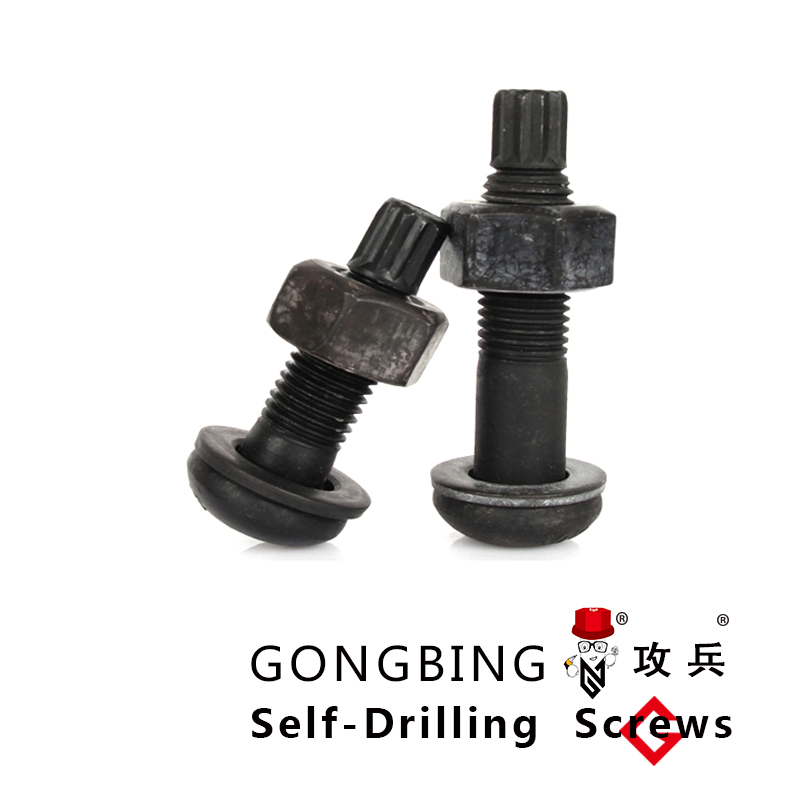construction bolt
Understanding Construction Bolts Essential Components for Structural Integrity
In the world of construction, the elements that hold structures together are just as important as the materials themselves. Among these elements, construction bolts play a critical role in ensuring the stability and durability of buildings, bridges, and other infrastructures. This article delves into the significance, types, applications, and best practices regarding construction bolts.
What are Construction Bolts?
Construction bolts are heavy-duty fasteners designed to secure different components of a structure. They typically consist of a cylindrical shaft with threads to accommodate a nut, enabling strong and reliable connections between various parts. Unlike regular bolts, construction bolts are engineered to bear higher loads and withstand harsher conditions, making them indispensable in construction projects.
Types of Construction Bolts
There are several types of construction bolts available, each serving unique purposes based on their design and application
1. Hex Bolts These are the most commonly used bolts in construction. They have a hexagonal head that permits the use of a wrench for tightening. They are used extensively in steel structures and frameworks.
2. Lag Bolts Often used in wood construction, lag bolts provide a strong connection for wooden materials. They have a wide, flat head and coarse threads that grip securely into the wood, making them ideal for heavy-duty applications.
3. Anchor Bolts Essential for anchoring structures to concrete, anchor bolts are critical in ensuring that buildings withstand seismic forces and wind loads. They are embedded deep into concrete and may have a hooked or L-shaped end for additional anchoring.
4. Carriage Bolts These bolts have a rounded head and a square neck that prevents them from turning when tightened. Carriage bolts are mainly used in applications where a smooth finish is desired, such as in wooden structures.
5. Eye Bolts These bolts have a loop at the top, allowing for the attachment of ropes or lifting devices. They're commonly used in rigging and lifting applications.
construction bolt

Applications of Construction Bolts
The applications for construction bolts are vast and varied. They are utilized in building frameworks, bridges, equipment, and even vehicles. The construction of skyscrapers often relies on hex bolts to join steel beams, while lag bolts are crucial in wooden homes for securing frameworks. Anchor bolts ensure that structures remain stable and secure against environmental forces. Moreover, eye bolts are utilized in lifting and towing applications, emphasizing the versatility of these fasteners.
Best Practices for Using Construction Bolts
To maximize the efficiency and safety of construction bolts, adhering to certain best practices is essential
1. Proper Selection Choose the right type and grade of bolt based on the specific requirements of your project. Consider factors such as load-bearing capacity, environmental conditions, and material compatibility.
2. Correct Installation Follow manufacturer guidelines for installation, ensuring that bolts are tightened to the recommended torque specifications. Under-tightening can lead to joint failure, while over-tightening may result in bolt breakage.
3. Regular Inspections Periodically inspect bolts for signs of wear, corrosion, or loosening. This is especially important in structures exposed to harsh weather conditions or heavy loads.
4. Use of Washers Incorporate washers to distribute the load and prevent damage to the connected materials. This enhances the overall strength of the joint.
Conclusion
In summary, construction bolts are vital components in the realm of construction, providing the necessary strength and stability that structures require. Understanding the types, applications, and best practices for using construction bolts ensures that builders and engineers can create safe and durable infrastructures. Whether it be a family home or a towering skyscraper, the role of construction bolts cannot be underestimated in the quest for structural integrity.
-
Weatherproof Plastic Expansion Anchors for OutdoorNewsJun.06,2025
-
Sustainability in the Supply Chain: Eco-Friendly TEK Screws ProductionNewsJun.06,2025
-
Load-Bearing Capacity of External Insulation FixingsNewsJun.06,2025
-
Double Head Bolts: Enhancing Efficiency in Industrial MachineryNewsJun.06,2025
-
Corrosion Resistance in Chipboard Screws: Coatings for Wholesale DurabilityNewsJun.06,2025
-
Butterfly Toggle Bolts : Enhancing Structural ResilienceNewsJun.06,2025
